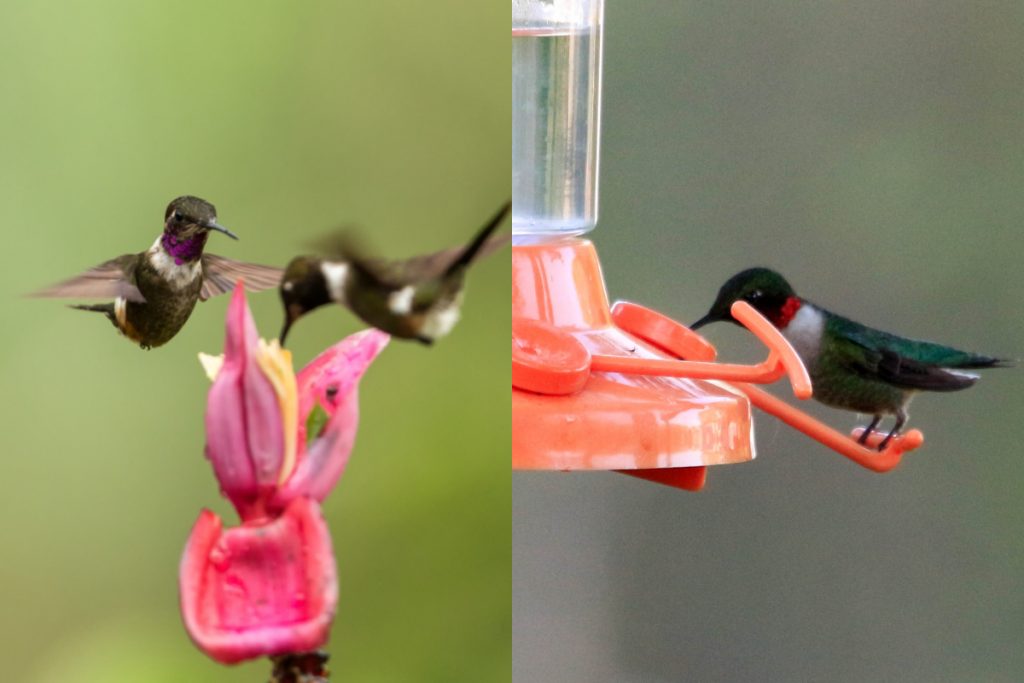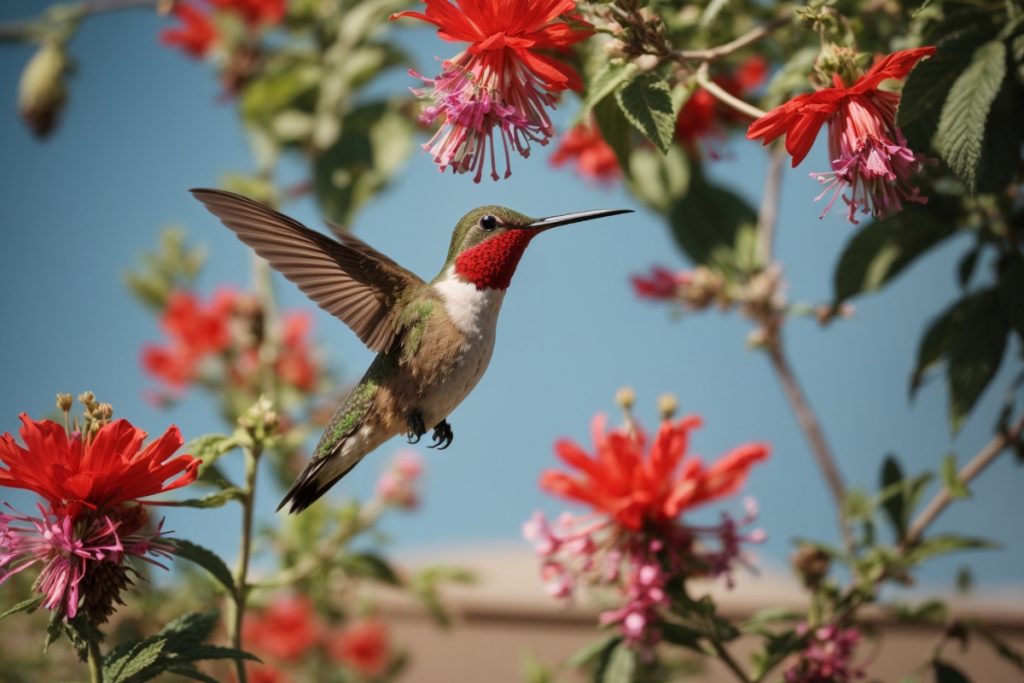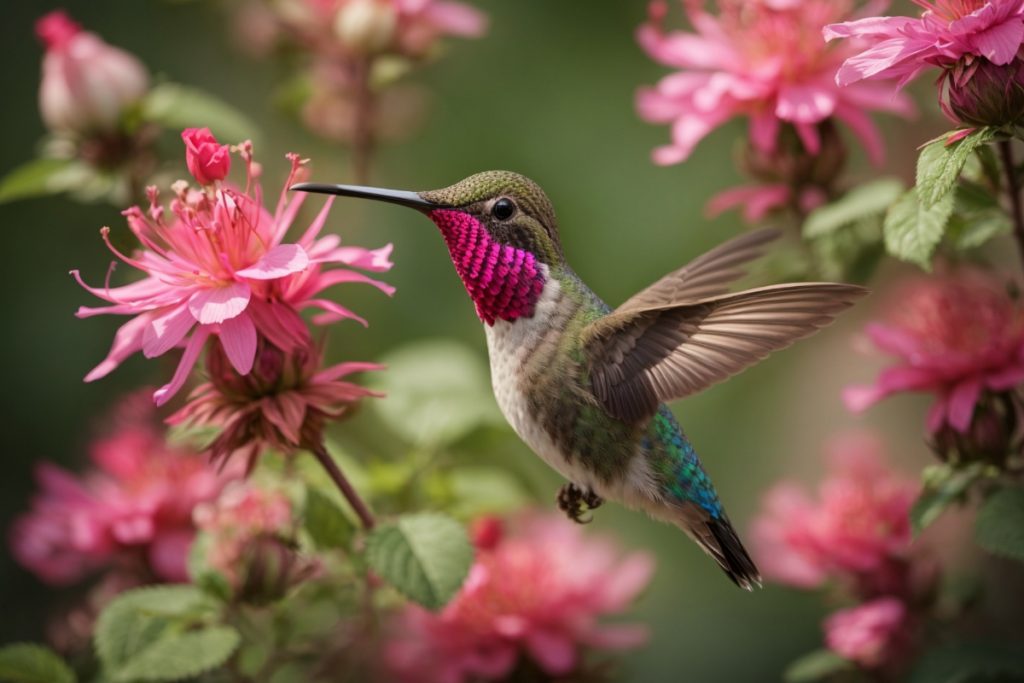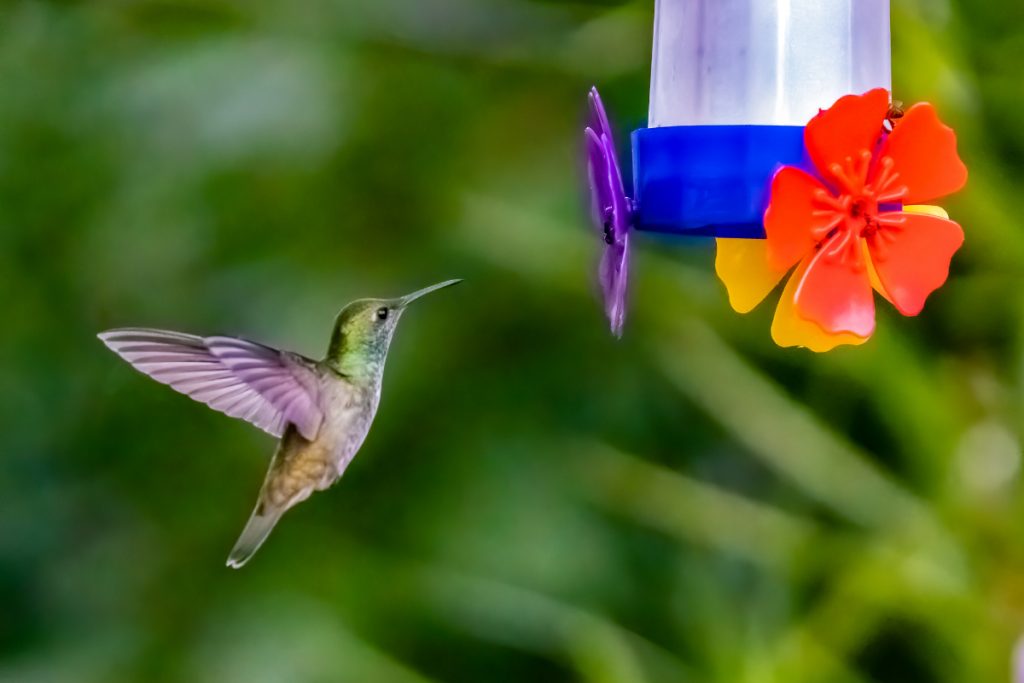Top on the list of migrant birds in the world are hummingbirds. Even though they are tiny, these birds journey around the globe in search of warmer regions with plenty of food. That brings us to their primary food source – nectar. Can they really source this food in Colorado?
Colorado has a variety of landscapes, such as the Rocky Mountains. These landscapes have many different types of flowers that attract hummingbirds. And that’s why up to 10 different species of hummingbirds are observed in this state each year.
However, the distribution of these migrant birds across various regions in the state is not even. So, the possibility of sighting these birds someday depends on your location within the state.
In this article, we’ll discuss the departure timing of hummingbirds in Colorado and how to prepare for their anticipated visit every year.
When Do Hummingbirds Leave Colorado?
Hummingbirds begin their departure from Colorado as early as July, depending on the species. Some might choose to leave later, around September. By October, the majority of these migrating birds would have left Colorado.
However, it’s not uncommon to find a few old or injured hummingbirds that are unable to migrate and, hence, remain in the state during winter.

Related post to read about Best Hummingbird Feeders.
- When Do Hummingbirds Leave Colorado?
- Why Do Hummingbirds Leave Colorado?
- What Kinds Of Hummingbirds Are Commonly Found In Colorado?
- When Do Hummingbirds Arrive In Colorado?
- Where Can You Find Hummingbirds In Colorado?
- How Can You Attract Hummingbirds in Colorado?
- Tips For Keeping Your Garden Hummingbird-friendly in Colorado
- When Should You Hang Up Your Hummingbird Feeders In Colorado?
- When Should Hummingbird Feeders Be Taken Down In Colorado?
- Where Do Colorado Hummingbirds Migrate To In The Winter?
- Conclusion
- Useful Links:

Why Do Hummingbirds Leave Colorado?
Hummingbirds leave Colorado every year for various reasons, which include the following:
- Instinct: Hummingbirds possess ingrained biological migration cues that prompt their migration from Colorado. Their migration timing is guided by their innate circadian (daily) and circannual (yearly) rhythms.
- Food availability: As winter approaches, their food sources from flowers and insects become scarce. The decline in their primary food source also drives their migration from Colorado.
- Climate: Colorado’s harsh winters force these tiny birds to fly south in search of warmer regions, more food and survival.

What Kinds Of Hummingbirds Are Commonly Found In Colorado?
In Colorado, you’ll often see Broad-tailed, Black-chinned, Calliope, Rufous, and Ruby-throated hummingbirds.
You can sometimes find other types of hummingbirds that migrate to Colorado. These include Anna’s, Blue-throated Mountain Gem, Costa’s, Rivoli’s, and White-eared hummingbirds.
When Do Hummingbirds Arrive In Colorado?
The arrival and departure time of hummingbirds in Colorado varies depending on the species. Typically, these birds start arriving in Colorado in early April. Some migratory birds may arrive even as late as the end of May.

Where Can You Find Hummingbirds In Colorado?
Because these lovely birds are not spread out evenly in Colorado, you might wonder where you can generally see them. You can find hummingbirds in places like Gunnison National Forest and the Rocky Mountains. They can even be seen in Denver, the state capital, sometimes in people’s backyards.
Broad-tailed hummingbirds are usually found west of Colorado Springs. Black-chinned hummingbirds can be found widely across deserts and mountain forests.
Even though these birds are mostly found in these locations, you can attract them to your space by creating a welcoming environment.

How Can You Attract Hummingbirds in Colorado?
You can attract hummingbirds to your space with easy methods. All you have to do is create a welcoming habitat for them, and you can be sure that they will be enticed. Listed below are some of the most effective ways to attract hummingbirds in Colorado:
- Grow native plants: If you have space for a garden in your backyard, then you can grow nectar-rich and insect-friendly plants. Nectar from flowers is their primary food source, so planting a variety of flowers that have abundant nectar is a good way to attract them.
Aside from nectar, hummingbirds eat small bugs and insects for nutrients that nectar doesn’t provide. Also, baby hummingbirds rely on the nutrients from insects to grow into healthy adults.
You can grow Colorado native plants like bee balm, salvia, Indian paintbrush, and penstemons. Also, giant hyssop, native honeysuckles, golden currant, wax currants, and lupines.
- Provide hummingbird feeders: Nectar from feeders serves as a supplementary form of diet for hummingbirds. These feeders can be filled with a simple sugar-water solution and then hung outside apartment windows or tree branches. This solution is made in a straightforward process that involves dissolving a cup of white sugar in four cups of clean water.
Note that you have to be consistent about changing the solution regularly, as bacteria can grow quickly in sugary water. Also, do not add any dye to the nectar, as it can be harmful to the birds.
- Provide water sources: Provide a shallow water source with a gently-flowing mister, as these birds don’t only drink from it but also use them for bathing.

Tips For Keeping Your Garden Hummingbird-friendly in Colorado
If you have a garden, here are some tips to keep your garden safe for your special visitors (hummingbirds) in Colorado:
- Use only organic pest control methods when cultivating your plants. The use of chemicals like pesticides, chemical fertilisers, and herbicides can harm hummingbirds.
- Always opt for native plant species instead of invasive plants. Native plants are not only an excellent choice for hummingbirds; they are also beneficial to the environment.
- Create habitats that provide shelter and nesting sites for these birds. These habitats can be in the form of trees, tall plants, and shrubs.
- Choose a variety of brightly coloured plants that are rich in nectar. As colourful birds, hummingbirds are naturally drawn to vibrant colours. Therefore, it is best to cultivate plants with vibrant hues such as red, orange, and pink.
- Plant a wide array of flowers that always bloom. So, to keep hummingbirds fed all season with nectar, plant flowers that bloom in early, mid, and late-season.
When Should You Hang Up Your Hummingbird Feeders In Colorado?
To attract the first hummingbirds that come to Colorado in the summer, hang up bird feeders in late March.
Male hummingbirds are the first to come to Colorado and establish their territories. Then, the females join them shortly after.

When Should Hummingbird Feeders Be Taken Down In Colorado?
The last set of hummingbirds typically bid goodbye to Colorado by November. So, if you don’t notice any hummingbirds at your feeder for about 2 weeks, it’s safe to take them down at the end of November.
But still, you can leave your feeders out to feed old and injured birds that can’t migrate during the winter. Just remember to change the solution regularly.
Where Do Colorado Hummingbirds Migrate To In The Winter?
Most hummingbirds in Colorado do fly south during winter. They travel to countries like Mexico, Guatemala, Belize, Honduras, and Panama.
Imagine them flying thousands of miles just to find warmth! They’re like little adventurers searching for a warmer place to stay. During this journey, they might stop and rest, refuelling with nectar from flowers.
When winter ends, they’ll make the long trip back to Colorado. So, the next time you see a hummingbird, think about the big journey it takes every year!
Conclusion
Knowing when hummingbirds arrive and leave Colorado yearly will give you enough time to prepare for their visits. However, four species of hummingbirds live in Colorado all year round. You can see these small birds often in the state, even in winter.
Also, an interesting feature of these delightful birds is their retentive memory. Hummingbirds remember each feeder and flower they visit. If you make a welcoming space for them, they will probably come back in the future.
And that’s all on this post; I hope you found it helpful. If you do, please leave your feedback in the comment section below. I will be more than happy to hear from you…
Until next time, thanks for reading.
Useful Links:
Related Posts to Read – Hummingbirds Migrations:
- When Do Hummingbirds Leave Ohio?
- When Do Hummingbirds Leave Michigan?
- When Do Hummingbirds Leave Pennsylvania?
- When Do Hummingbirds Leave Florida?
- When Do Hummingbirds Leave Oregon?
- When Do Hummingbirds Leave New York?
- When Do Hummingbirds Leave Oklahoma?
- When Do Hummingbirds Leave Minnesota?
- When Do Hummingbirds Leave South Carolina?
- When Do Hummingbirds Leave Louisiana?
- When Do Hummingbirds Leave Virginia?
- When Do Hummingbirds Leave Texas?
- When Do Hummingbirds Leave Indiana?
Related Posts to Read:
- Do Hummingbirds Beaks Open When Feeding?
- The Mysteries of Hummingbird Flight.
- 6 Fascinating Facts About Hummingbird Sizes.
- Ruby-Throated Hummingbird Migration Map.
- Where Do Hummingbirds Go When It Rains?
- How Much Does A Hummingbird Eat Per Day?
References:
- About Colorado.
- About Hummingbird (Link).
- Greenewalt, C. H. (1960). Hummingbirds. New York: Doubleday. Google Scholar.
- Carey C. The impacts of climate change on the annual cycles of birds. Philos Trans R Soc Lond B Biol Sci. 2009 Nov 27; 364(1534):3321-30. doi: 10.1098/rstb.2009.0182. PMID: 19833644; PMCID: PMC2781852.
- Rico-Guevara A, Rubega MA, Hurme KJ, Dudley R. Shifting Paradigms in the Mechanics of Nectar Extraction and Hummingbird Bill Morphology. Integr Org Biol. 2019 Jan 2;1(1):oby006. doi: 10.1093/iob/oby006. PMID: 33791513; PMCID: PMC7671138.
- Tyrrell LP, Goller B, Moore BA, Altshuler DL, Fernández-Juricic E. The Orientation of Visual Space from the Perspective of Hummingbirds. Front Neurosci. 2018 Jan 30;12:16. doi: 10.3389/fnins.2018.00016. PMID: 29440985; PMCID: PMC5797624.
- Hummingbirds Sighting (Journey North Map).
- About Hummingbird’s Characteristics.
